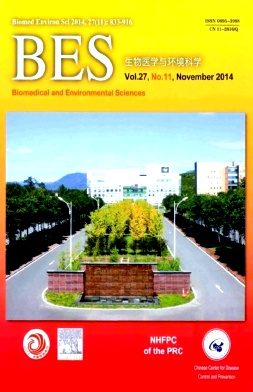Diversity and Distribution of Host Animal Species of Hantavirus and Risk to Human Health in Jiuhua Mountain Area, China
doi: 10.3967/bes2014.122
-
Key words:
- Hantavirus /
- Host animal /
- Diversity and distribution /
- Risk assessment /
- Jiuhua Mountain
Abstract: Objective To investigate the diversity and the distribution of host animal species of hantavirus and the effect on human health in Jiuhua Mountain area, China.
Methods The host animal species of hantavirus was surveyed by using the trap method and the species diversity was evaluated by using the Simpson, Shannon-Weaner, and Pielou indices. Hantavirus antigens or antibodies in lung and blood samples of all the captured host animals were detected by direct or indirect immunofluorescence.
Results Nine animal species of hantavirus were distributed in the forest ecosystem of Jiuhua Mountain. Of these, Niviventer confucianus and Apodemus agrarius were predominant, and N. confucianus, Rattus norvegicus, and Mus musculus had relatively large niche breadth index values. The host animals in the eastern and western mountain regions shared similar biodiversity index characteristics, predominant species, and species structures. Hantavirus was detected in 5 host animal species in Jiuhua Mountain area, the carriage rate of hantavirus was 6.03%. The average density of host animals in forest areas of the mountainous area was only 2.20%, and the virus infection rate in the healthy population was 2.33%.
Conclusion The circulation of hantavirus was low in the forest areas of Jiuhua Mountain and did not pose a threat to human health.
| Citation: | HU Xing Qiang, LI Shi Guang, LIU Hong, WANG Jun, HUA Ri Mao. Diversity and Distribution of Host Animal Species of Hantavirus and Risk to Human Health in Jiuhua Mountain Area, China[J]. Biomedical and Environmental Sciences, 2014, 27(11): 849-857. doi: 10.3967/bes2014.122 |







 Quick Links
Quick Links
 DownLoad:
DownLoad: